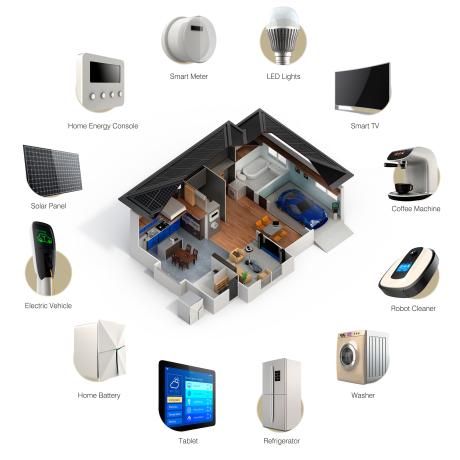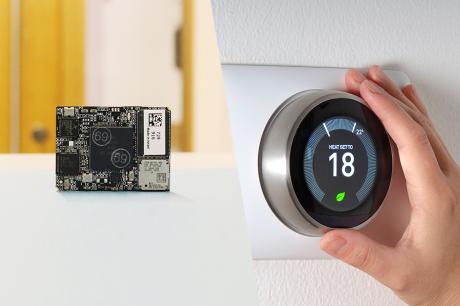Secure, High-Performance Displays for Payment Terminals
Oct 08, 2025Future-proof your payment technology with Anders secure touch displays. From EV chargers to self-service kiosks,…
Read moreYou might think that small IoT devices like gateways, smart appliances, and industrial sensors are too small to be worth attacking. Kaspersky’s SecureList website disagrees. Attacks on assets connected to the Internet of Things (IoT) more than doubled last year, topping 1.5 billion.
In this article you'll learn about:
Clearly, the hackers can see plenty of worthwhile opportunities. Without adequate protection, IoT devices are targets for data and IP theft, spying, and sabotage including bricking. Attacks also include hijacking to build botnets for distributed denial-of-service (DDoS) attacks and cryptojacking.
Each new device and network that comes online presents an opportunity for malicious groups and individuals. IoT devices may come with little or no security and so can be easy access points for hackers.

The IoT is still relatively new and growing quickly. Every day there are new connected assets to attack. Hence the number of attacks on IoT networks is increasing.
During the pandemic, the use of smart, connected devices like domestic appliances and home business equipment has increased, as people spend more time at home working or subject to social restrictions. As this interest in smart devices has risen, Kaspersky notes that attacks on IoT devices have intensified. As more data is shared this way and more IoT nodes are added, the risk increases.
Another aspect of the trend towards working from home, accelerated (but not initiated) by recent Covid lockdowns, is that workers are increasingly likely to connect their own devices remotely to their enterprise VPN. These connections, from locations beyond direct oversight of the organization’s IT department, act as potential gateways for criminals.

It’s also worth noting that, whereas an organisation will normally have well established security protocols within their infrastructures, expanding the scope to include homes of employees means this visibility is lost and security becomes harder to control.
Edge devices like gateways deployed remotely or distributed throughout a factory or smart city typically do not benefit from data-centre levels of security. However, protection is vital and must usually be relatively lightweight, not dependent on direct user interaction or requiring excessive software that can increase cost, complexity, and power consumption.
Moreover, many connections between IoT endpoints and devices like gateways are implemented using wireless standards like Bluetooth® or Wi-Fi that do not have heightened security. Criminals can try to connect their own devices to a target network using these interfaces.
IoT devices connected to a network often communicate with other devices as peers and typically via a gateway that provides a connection to a data centre. This could be as small as a server on the premises or may be a platform operated by a cloud service provider. A hacker can bring down an entire network if they can gain access to an IoT gateway and restrict services.
The consequences of successful attacks, for owners and operators, include:
An effective strategy is a critical foundation for protecting IoT networks. The strategy must be prepared for all eventualities, including suitable response if hackers manage to overcome defences. The underlying aim is to prevent unauthorised access to the network. It’s also important to be able to detect any breaches that occur. Measures are needed to reduce the impact of these breaches. And the cause of the breach must be addressed by applying a patch or update as quickly as possible.
Achieving these goals requires proper planning of the secure network. This includes:
Additional techniques such as intelligent power tracking can also be applied. Attacks on a device or network can sometimes cause shifts in power transitions and power states. NXP’s i.MX 8 application processors can intelligently track and manage power transitions and states, which can help to minimise the attack surfaces available to hackers.
IoT networks need to be secure all the way from endpoint devices through to the cloud.

OEMs may use a third-party platform like Azure Sphere, which combines secure, embedded hardware and software with a cloud-based security service, to ensure cost-effective end-to-end protection for price-sensitive equipment such as smart appliances. Selected i.MX 8 processors incorporate Azure Sphere technology to provide the root of trust and protect chip-to-cloud security.
Devices connected to the IoT are attractive targets for hackers and potentially offer multiple vulnerabilities that can be attacked. Standards are developed through lengthy consideration of the vulnerabilities and suitable approaches to eliminating or minimising them. Standards include:
These standards cover cybersecurity comprehensively, including security risk assessment, technical design, system requirements, lifetime management, patching, and others. Working to standards such as these can help ensure high-quality security for IoT devices of all types, for use in market sectors as diverse as industrial automation, smart buildings, healthcare, transportation, automotive, utilities, and consumer equipment like smart appliances.
Contact us to learn how Anders can help ensure your next IoT-device design can benefit from the best possible protection against cyber-attacks.